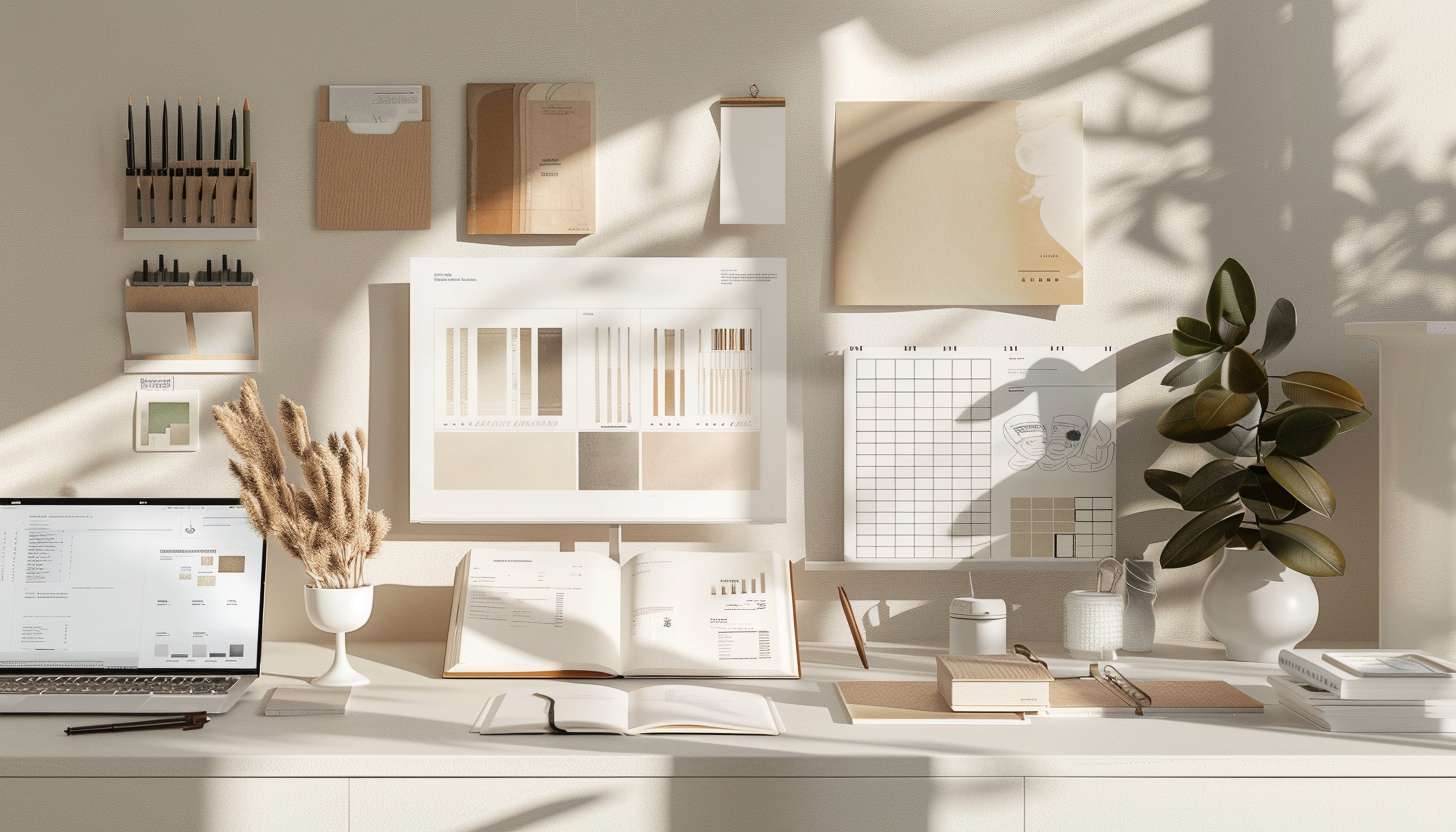Design determines the shape of every industry sector including marketing and digital solutions as well as product engineering and architectural practices. Color design operations spread across many areas of study which each possess distinctive principles and design tools. Design through its three main functions shapes human experiences because it generates fabulous imagery alongside simple interfaces and operational solutions. Arvin AI along with its AI-based functionality streamlines designing activities while enabling higher creativity and optimized workflow in current fast-paced creative operations. AI integration gives types of design the opportunity to work efficiently during their innovative problem-solving process.
Part 1: Graphic Design
Graphic design is the application of visuals in communicating messages effectively. In branding, marketing, and storytelling, graphic design applies the combination of typography, images, color schemes, and composition techniques.
Key Subfields of Graphic Design
- Branding Design – This deals with the designing of visual identities such as logos, color palette, and guidelines to establish the consistent presence of a brand.
- Typography Design – Aims to offer selection and arrangement of typefaces for making the text readably pleasing.
- Editorial Design – Magazine layouts, book covers, and newspaper types of design take a lead with structured content presentation.
- Advertising Design – Poster designs, banner display, and digital advertising are used to engage the masses and thereby attract attention.
Tools Used by Graphic Designers
- Adobe Creative Suite (Photoshop, Illustrator, InDesign) – It is one of the industry-standard tools for graphic creation and editing.
- Canva – An easy online solution for flat design projects that require speed.
- Figma – Quite popular in terms of UI design, but it is also used to collaborate on graphic types of design.
- Procreate – Perfect for digital illustration on tablets.
Part 2: UI/UX Design
- The user interface focuses on visual elements within digital products; the user interface includes elements such as buttons, icons, color schemes, and typography.
- User experience is focused on streamlining the overall journey that users will undertake during usability and interaction.
Importance in Web and App Development
An excellent UI/UX design creates a website or application that has an aesthetic beauty, is highly navigable and functional. Sound interface design improves user engagement and accessibility and hence conversion rates
Best Practices for an Intuitive Design
- User-Centered Approach – Usability research, testing, needs, and pain points.
- Consistency in Design – Constant use of appropriate fonts, colours, and icons throughout the entire interface.
- Responsive Design– Ensure the types of design rendered work on various screen resolutions and devices.
- Minimalistic Layouts – Avoid unnecessary clutter and promote the most important considerations for a clean, structured look.
- Fast Load Times – Optimize images and other assets to result in optimal performance and loss in latency.
Arvin AI is the AI-powered tool that enables UI/UX designers to create wireframes, analyze user behavior, and make digital experiences more efficient.
Extensive guide to creating the broad vision of design work, with high points on roles that technology does play in fueling creativity, and efficiency too.
Part 3: Motion Graphics and Animation Design
Motion graphic and animation plays a significant part in entertainment business, marketing sectors, and different forms of electronic media. More precisely, such graphics and animatic are primarily used in producing movies, series, and electronic games. Motion graphics turns commercials, advertisement on social media, and promotions sponsorship into communications that are rich in color with more memorable representations. Most the websites animate digitized with assistance from motion graphics in addition to interactive info graphics and online branding to engage in the attention of the site’s users and in general enhance experience of the user.
Software and Tools Used
Motion graphics and animation designers use different software instruments to bring their ideas to life. The most widely used software includes:
- Adobe After Effects: Industry standard for motion graphics and visual effects.
- Cinema 4D: Popular for 3D animation and modeling.
- Blender: Open-source software for 3D animation and rendering.
- Toon Boom Harmony: Used for 2D animation in TV shows and films.
- Autodesk Maya: A powerful tool for 3D animation and character modeling.
Examples of Impactful Motion Design
Some examples of influential motion types of design include:
- Marvel Cinematic Universe’s Opening Sequence: Visual dynamic animation as an opener of the movies
- Apple’s Product Launch Videos: Sleek motion graphics for all product features to be displayed.
- Nike’s Animated Ads: Motion design used for compelling storytelling, brand engagement and more.
- Social Media GIFs and Ads: Short form animations that boost branding and interaction by the audience with the brand.
Part 4: Industrial and Product Design
Industrial and product design concerns with the types of design of physical products which carry a form as well as function. It ranges from the designing of the most everyday products to electronic, furniture, and consumer goods in relation to the user experience. Ergonomics, materiality, and sustainability are also taken into account for it to be use effectively. The overall idea is that these products have a visual appeal that also serves a real-life solution effectively.
Role in Manufacturing and Technology
Industrial design plays a critical role in manufacturing and technology, since it forms the link between the design stage and production. It works together with engineers and manufacturers to come up with prototypes, fine-tune types of design, and improve the manufacturing process. The advancement in technology has also led industrial designers to use CAD software, 3D printing, and virtual prototyping in their development, speeding up development and reducing costs. Innovative, connected products have also been develope with the help of smart technology and IoT (Internet of Things).
Case Studies of Successful Product Design
- Apple iPhone: This is a revolutionized product in terms of integrating sleek design and advanced technology together to set the standard for modern smartphones.
- Dyson Vacuum Cleaners: These are made with superior performance and efficiency that integrates advanced engineering with ergonomic design.
- Tesla Electric Cars: The mix of futuristic aesthetics, sustainability, and high-performance engineering is great product types of design.
- IKEA’s Modular Furniture: Space-saving, affordable, and easy to assemble.
Part 5: Interior and Environmental Design
Interior and environmental design greatly impacts architecture and urban planning as they determine how a space is used and experienced. In the case of well-designed interiors, comfort, functionality, and aesthetics are significantly enhanced in a home, an office, and public spaces. Environmental types of design relates to urban planning, which ensures sustainability, has green spaces, and community-friendly layouts to make life better.
How Interior Designers Create Functional Spaces
Interior designers make efficient and beautiful interior spaces through elements such as space planning, lighting, color theory, and selection of materials. They need to consider the following:
- Ergonomics and Accessibility: Provide comfort and usability for varying needs
- Sustainable Materials: To minimize negative environmental impact by applying eco-friendly material.
- Smart Technology Integration: Automatic integration with technologies for lighting, climate control, and security systems.
- Cohesive Aesthetics: Balancing colors, textures, and furniture arrangements to maintain a balanced aesthetic harmony.
Part 6: How Arvin AI Helps Designers
Arvin AI makes the whole designing process smoother because it allows it to have clever assistance on lots of levels; whether in regard to graphics or UI/UX or even brands, efficiency with less work involved and fostering the creativity can go a long way. Arvin AI through powerful automation brings down the task involving repetitive effort instead of polishing that idea into gold. Its advanced features offer types of design recommendations, color palette suggestions, and layout optimizations, making it an essential tool for professionals and beginners alike.
Key Features of Arvin AI for Designers:
- AI-Powered Design Suggestions: Generates intelligent recommendations for layouts, colors, and typography.
- Auto-Enhance & Editing Tools: Instantly improves image quality, sharpness, and overall aesthetics.
- Smart Color Palette Generator: Suggests harmonious color combinations based on design trends.
- UI/UX Wireframing Assistance: Provides wireframe templates, also layout ideas for app and web design.
- Efficient Workflow Automation: Saves time in duplicate design work through AI-based automation.
Steps to Use Arvin AI for making Logo
Step 1: Create an account and log in on Arvin AI
Visit the website of Arvin AI, open an account, and log in for the logo design feature.
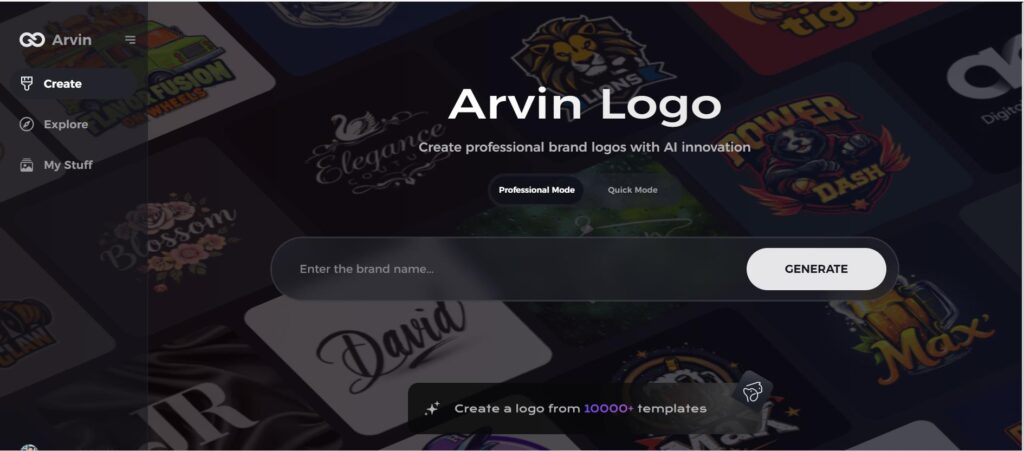
Step 2: Input your brand information and preferences
Input your brand name, slogan, and industry. Specify all your design preferences, which may include font styles or images themes.
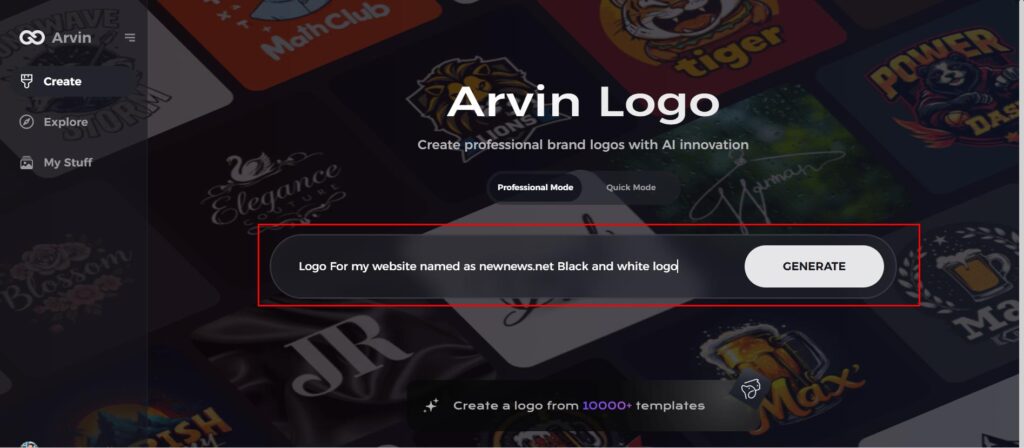
Step 3: Pic your industry:
Now select your industry related to your niche. This will help the AI generate logo styles and types that better suit your preferences.
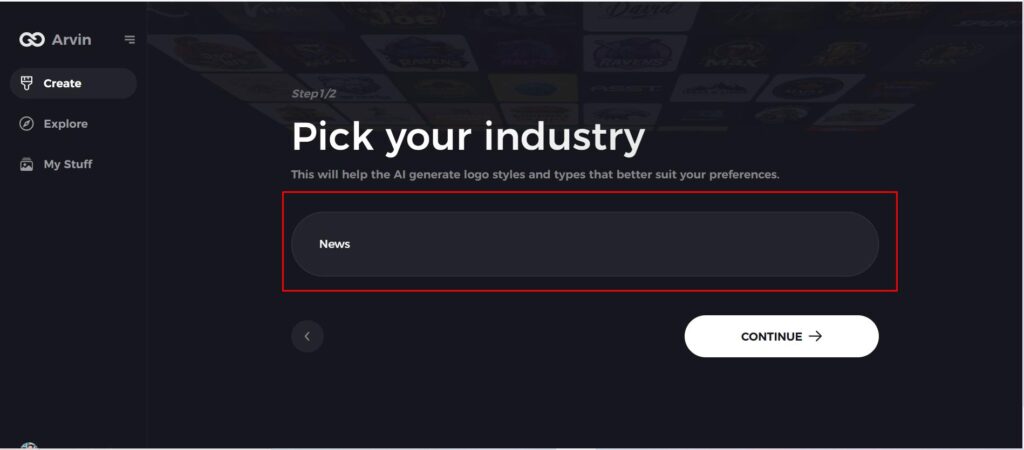
Step 4: Select Style:
Now select a style which you would like and continue. This will serve as inspiration to create your preferred logo.
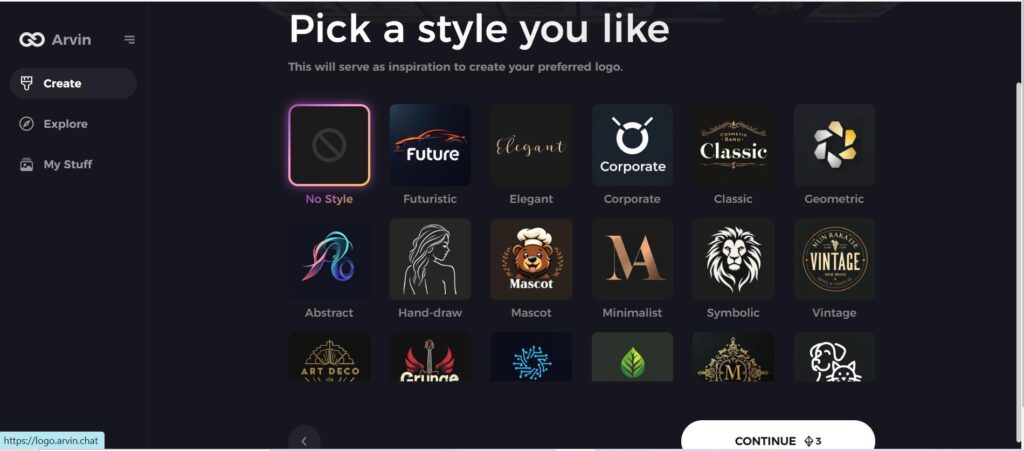
Step 5: Design Personalize through the tools of Arvin AI
After Arvin AI gives create your logo, you can customize those logos with the tools that have elements such as font style, layout, and the positioning of symbols. Experiment on different designs until you like what you see.
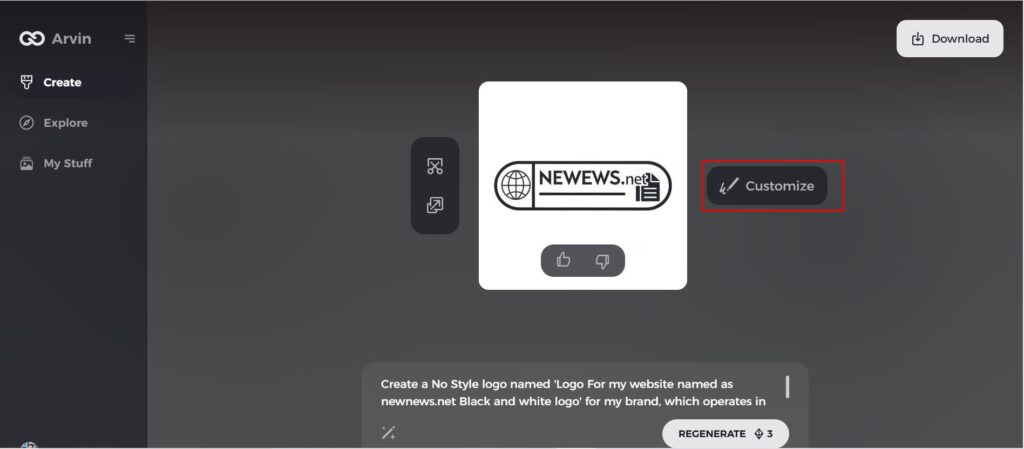
Step 6: Save and download the final logo
Preview the finished logo and save it in a high-resolution format for both print and digital uses.
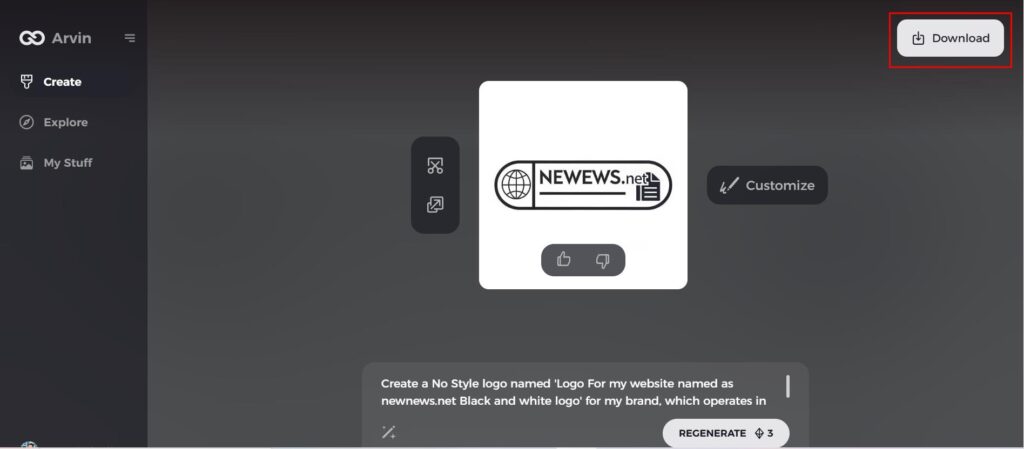
Conclusion
Design is a continuously evolving field under a broad banner; different disciplines break up into two concerning various industries. Graphic design to UI/UX, motion graphics, fashion, and industrial design-all has different roles. However, all go on to fulfill the objective of shaping user experiences, brands, and styles. Examining various sectors of design also promotes creativity as well as mastery, thus facilitating different career possibilities. For an optimized design workflow, tools like Arvin AI can streamline processes, enhance productivity, and provide intelligent design suggestions, making the creative journey more efficient.
FAQs on Types of Design
1. What is currently the most in-demand type of design?
UI/UX types of design are one of the most in-demand fields because of increasing reliance on digital platforms. Business houses always prioritize seamless user experience, and for that reason, UI/UX designers are important for website and app development.
2. What software is commonly used in different design fields?
Each design field relies on specific software to produce the best results. Graphic designers typically use Adobe Suite such as Photoshop, Illustrator, and InDesign. Motion designers use an animation and video effects package including After Effects, Blender, and Cinema 4D.
3. Can AI replace human designers?
No, definitely. AI can’t replace entirely human designers. However, it would be controlled on the level of automation and generation in the designing stage, via AI software such as Arvin AI.
4. What field of designing do I find best?
Depending on the area of interest, skill set, and career goal, a field from types of design can be chosen to pursue. For those who like making digital interfaces and enhancing user experience, then UI/UX would be more suited.

